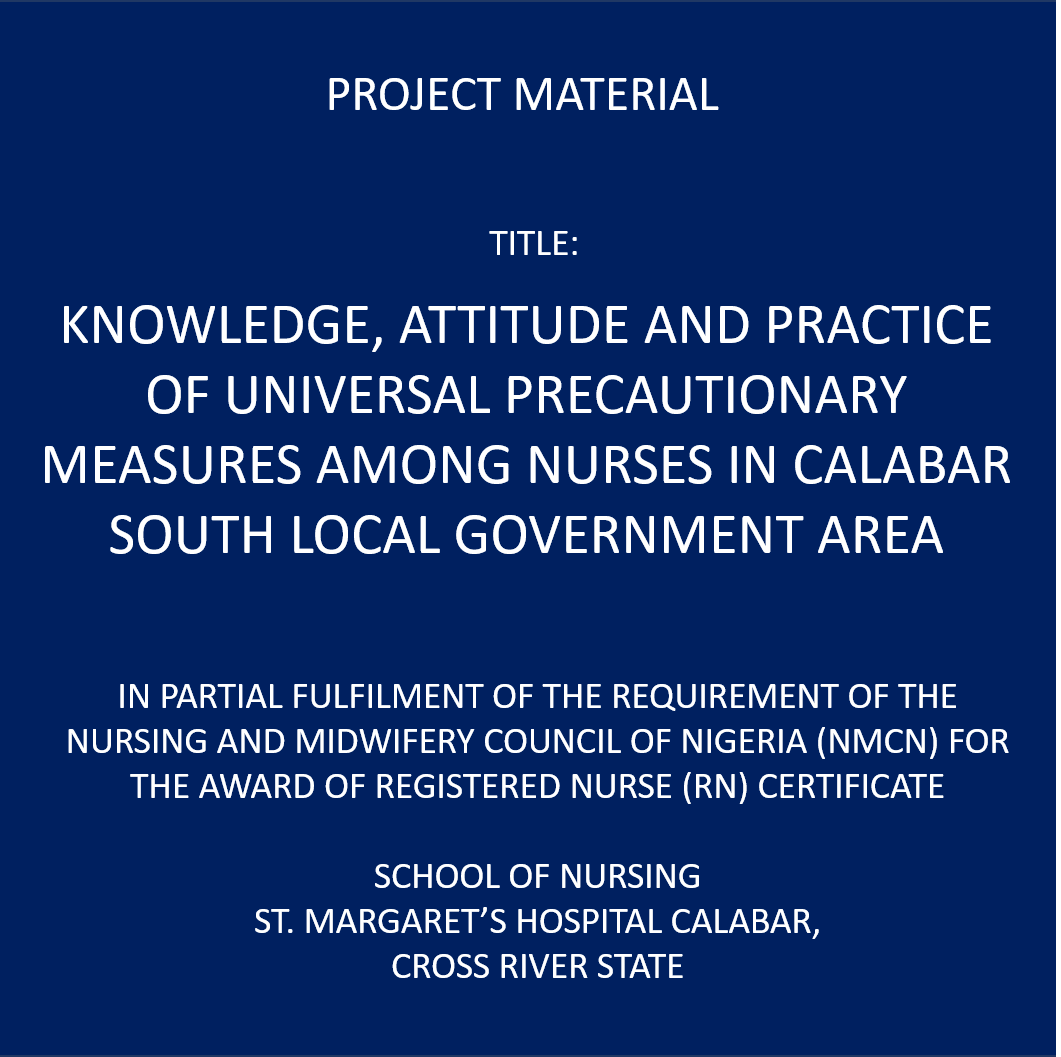No products in the cart.
Knowledge, Attitude and Practice of Universal Precautionary Measures Among Nurses in Calabar South Local Government Area
₦10,150.00
The specific objectives are to:
- Determine the knowledge of nurses regarding Universal precautionary measures.
- Determine the attitude of nurses towards universal precautionary measures.
- Determine the level of practice of Universal precautionary measures among nurses.
- Identify barriers to the practice of universal precautions amongst nurses
BACKGROUND OF THE STUDY
Nurses are at risk of occupational hazards as they perform their duty in the hospital. Nurses are exposed to blood-borne diseases such as Human Immunodeficiency Virus (HIV), Hepatitis B and C viruses in their daily encounter with patients and materials through unsafe injections (Adare & Temesgen, 2020). In an era of HIV epidemic in Sub-Sahara, Africa, occupational risk is really significant and developing countries account for the highest prevalence of HIV infection in the world and the commonest route is needle stick injury (Enwere & Chiekulie, 2014). According to the World Health Organization (2022), there are approximately 3 million cases of needle stick injury (NSI) among nurses each year, with about 58.5% of these occurring in developing countries, 2.5% of HIV and 40% of Heptatis B & C cases that occurred among nurses worldwide were as a result of exposure to occupational hazards. The fact that blood and other body fluids from patients are becoming increasingly hazardous to nurses; it has become of great concern to the public as well as nurses all over the world. Therefore, practice of universal precautions as a way of safeguarding against possible infections in the workplace had become more and more widely accepted by nurses (Bolayi-Osagie & Adeyemo, 2015).
No product has been found!
